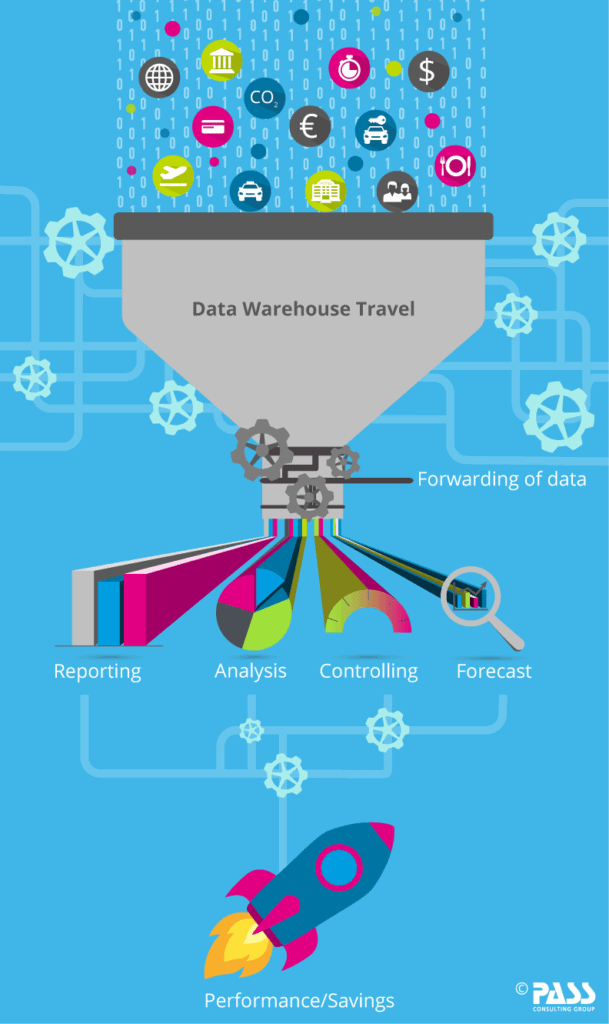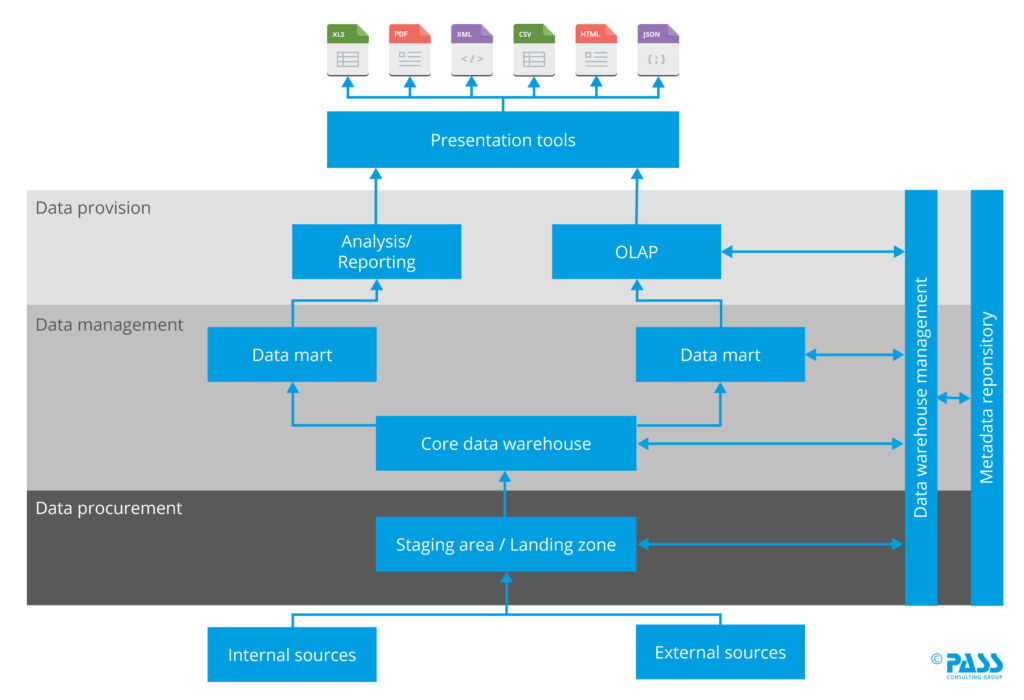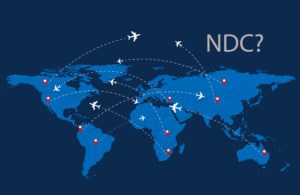As the saying goes, “You can’t manage what you can’t measure.” It is the same in the business travel sector. The basis for this is the collection and consolidation of data in order to obtain the relevant information.
Data Warehouse for Travel Management
The collection point for the various data gathered from different sources is called a data warehouse.
The data warehouse is more or less the foundation on which decisions are made, negotiations are conducted, or successes are measured and processes are optimized with the aim of uncovering inefficiencies and achieving savings.
Technically, a travel manager has nothing to do with the data warehouse, but it does provide him with information that he can use profitably to improve the company’s results and provide the best possible support for his company’s travelers. It is important to ensure that all relevant data pools are connected to the DWH.
What Data Is the Data Warehouse Based On?
Of course, this depends on which insights are to be gained from the data warehouse. As a rule, in the area of travel management these are:
- the personal/organizational data from the human resources (HR) system
- the booking data from the various reservation systems (GDSs, OBEs, direct suppliers, which also includes NDC) – this includes both the bookings made via the travel agency and the travel bookings made by the company directly
- the accounting data of the payment providers and/or also from the travel expense accounting systems
- as well as “enrichment” data such as CO2 emissions, exchange rate data or geographic data.
How Does the Structure of a Data Warehouse Look Like?
The reference architecture by our colleague and Competence Center Manager Business Intelligence Dr. Rainer Hahn shows the three-level structure of the data warehouse with one level for data procurement, one for data storage and the third for data provision.
Data procurement: landing zone
Here, the incoming data is initially loaded 1:1 so that it is available in a uniform form and can be further processed using database means. This part of the data management is not permanent, and so personal information is deleted here again when it is no longer needed.
Data management: storage zone
Here the data is stored permanently. All necessary cleanups have been carried out, and unnecessary personal data is not stored here. The main focus is to store the data in such a way that historical relationships can be traced in an audit-proof manner.
Data provision: reporting zone
Here, the data is filtered with respect to the storage zone, so that only the data relevant for reporting is stored, and a restructuring is carried out that allows specialists without database knowledge to carry out individual reporting using the appropriate tools. At the same time, it is ensured that standard reporting can be carried out efficiently on the structures available here.
Which Information Can Be Obtained From a Data Warehouse?
In general, it can be said that a data warehouse often acts as a basic element of a company-wide strategy for business intelligence so that well-founded business decisions can be made as well as providing results for performance management. At the same time, it provides procurement with important data for negotiating with the relevant service providers.
It is therefore used for:
- Recurring reporting: (e.g. expenses per region / per carrier or supplier / per cost center / … number of travelers, number of bookings per region or average advance booking time, CO2 emissions, booking channel, etc.)
- Monitoring / controlling (e.g. KPI target achievement, total budget overrun warning, negotiated fare performance, travel policy compliance, corporate rates utilization rate, etc.)
- Real-time analyses (e.g. benchmarks, location analysis, etc.)
- Data provision to other service providers such as travel risk management companies
- Forecasts
The data obtained from the data warehouse can thus be used for internal reporting to management, optimization of current processes, behavioral changes (e.g. with a view to sustainability or savings), as a basis for negotiations with service providers, as a data pool for further services, and as a decision-guidance for further measures.
What Should you Look for When Setting Up a Data Warehouse?
- Relevant data pots, because only with the right data can you also gain the desired insights.
- Automated processes – the data delivery (incl. the quality of the data) as well as the output of the data must be automated in order to avoid manual efforts. This automation also concerns error management – i.e. if, for example, relevant data is missing from a data set.
- Data security – where personal and business-relevant data is involved, the data security factor and data anonymization naturally play an important role.
- Intuitive use without training efforts – the selected tools for reports, monitoring and ad-hoc analyses should be intuitively operable for all users.
It can also be an advantage if the data warehouse is provided by an independent service provider in order to be able to react flexibly to changes.
A helpful read with best practices on this topic can be found in the paper „Measured and Managed – Getting More out of Your Corporate Travel Data“ [pdf] by Airplus.com.
PASS PNR Retrieval
Picture: Shutterstock; Illustrations: PASS






